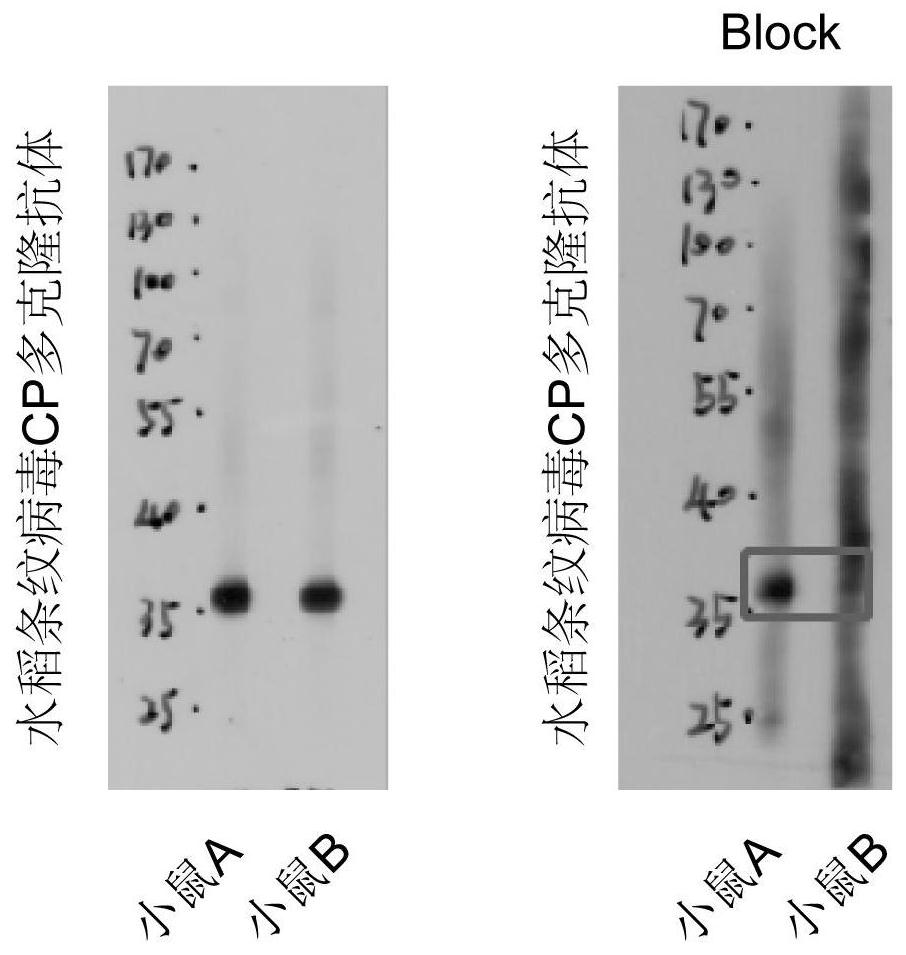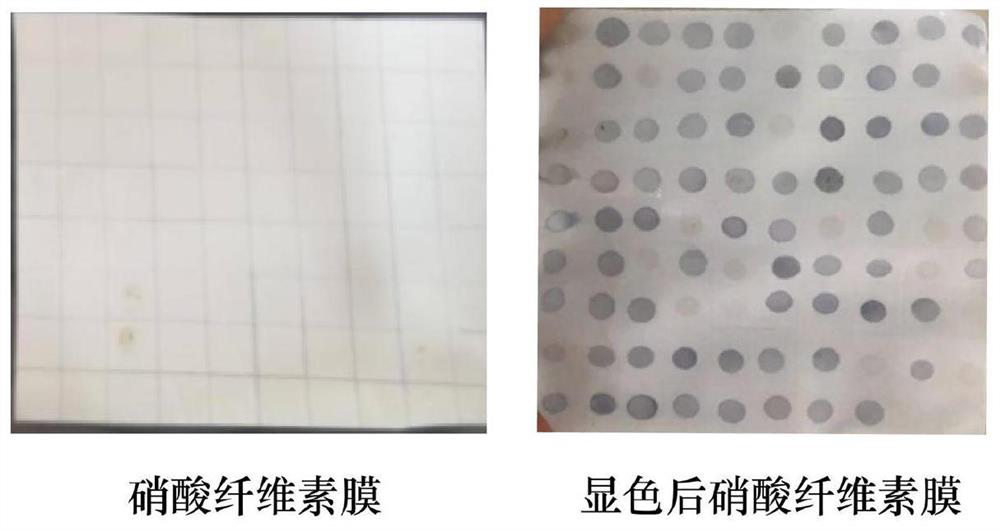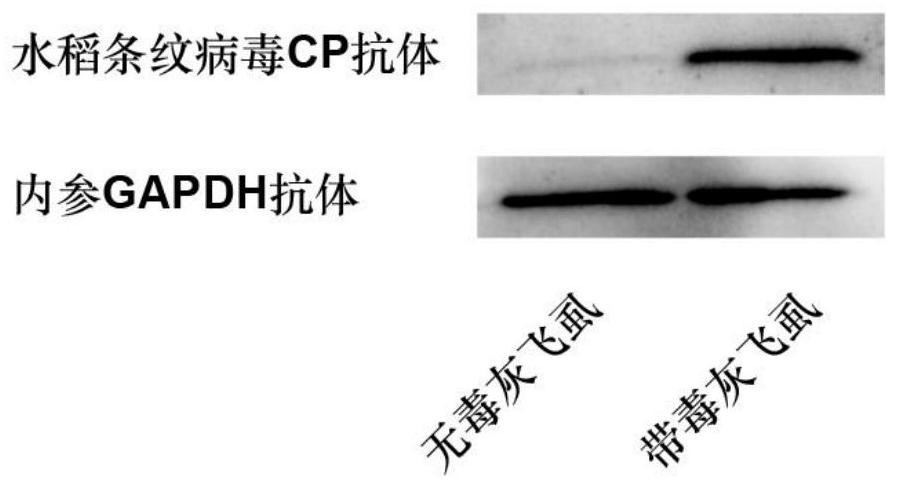Polyclonal antibody of rice stripe virus nucleocapsid protein as well as preparation method and application thereof
A technology of rice stripe virus and nucleocapsid protein, applied in antiviral immunoglobulin, virus/bacteriophage, botanical equipment and methods, etc., can solve the problem of unsuitable batch operation, high cost and instrument requirements, and monoclonal antibody performance Instability and other problems, to achieve the effect of disease monitoring
- Summary
- Abstract
- Description
- Claims
- Application Information
AI Technical Summary
Problems solved by technology
Method used
Image
Examples
preparation example Construction
[0028] In the present invention, the preparation method of the recombinant vector preferably includes the following steps: 1) extracting the total RNA of SBPH with rice stripe virus, and obtaining cDNA by reverse transcription; 2) performing PCR amplification using the cDNA as a template 3) transform Escherichia coli to obtain CP / pMD-19T plasmid after connecting said gene fragment with pMD-19T carrier; 4) After double enzyme digestion of said CP / pMD-19T plasmid, reclaim The gene fragment encoding CP is connected with the pET-28a vector to obtain the recombinant vector.
[0029] In the present invention, the total RNA of SBPH carrying rice stripe virus is extracted, and cDNA is obtained by reverse transcription. In the present invention, the extraction of the total RNA preferably adopts the TRIzol method, and in the specific implementation process of the present invention, it is preferably carried out using a kit, and the kit is preferably TRIzol TM LS Reagent, 10296010, Ther...
Embodiment 1
[0046] Construction of CP / pET-28a prokaryotic expression vector:
[0047] Sequence amplification of rice stripe virus CP: TRIzol method (TRIzol TM LS Reagent, 10296010, ThermoFisher, USA) was used to extract the total RNA of the poisonous SBPH; the extracted total RNA was used as a template for reverse transcription to obtain cDNA; the reverse transcription was carried out using the TAKARA Reverse Transcription Kit, see the kit instructions for operation .
[0048] The CP gene was obtained by PCR amplification using cDNA as template.
[0049] Specific primers for PCR amplification:
[0050] CP-BamHI-R: TAGGATCCCTAGTCATCTGC (SEQ ID No. 3);
[0051] CP-NocI-F: TACCATGGatGTGGGACTATGT (SEQ ID No. 4).
[0052] The PCR amplification system is shown in Table 1.
[0053] Table 1 PCR amplification system
[0054]
[0055] PCR amplification program:
[0056] (1) Pre-denaturation at 94°C for 3 minutes;
[0057] (2) Denaturation at 94°C for 30s, annealing at 56°C for 30s, exte...
Embodiment 2
[0064] CP / pET-28a recombinant plasmid construction: The CP fragment recovered in Example 1 was ligated with the pMD-19T vector at a molar ratio of 3:1 with Solution I ligase at 16°C for 30 min. The ligation product was transformed into Escherichia coli by heat shock method, and positive colonies were screened by resistance and blue-white screening. After sequencing and identification, store the CP / pMD-19T plasmid at -20°C.
[0065] Add 1 μl of BamHI (15U / μl) and NcoI (15U / μl) enzymes to the 50 μl system to digest CP / pMD-19T, and the target fragment and pET-28a vector after gel cutting and recovery according to 3: 1. Connect at 16°C for 30 minutes. Transform Escherichia coli to screen positive clones, identify them by sequencing, and obtain CP / pET-28a prokaryotic expression vector.
[0066] Prokaryotic expression of CP fusion protein:
[0067] (1) Cultivation of CP / pET-28a transformed Escherichia coli: the recombinant plasmid CP / pET-28a was transformed into Escherichia coli ...
PUM
 Login to View More
Login to View More Abstract
Description
Claims
Application Information
 Login to View More
Login to View More - R&D
- Intellectual Property
- Life Sciences
- Materials
- Tech Scout
- Unparalleled Data Quality
- Higher Quality Content
- 60% Fewer Hallucinations
Browse by: Latest US Patents, China's latest patents, Technical Efficacy Thesaurus, Application Domain, Technology Topic, Popular Technical Reports.
© 2025 PatSnap. All rights reserved.Legal|Privacy policy|Modern Slavery Act Transparency Statement|Sitemap|About US| Contact US: help@patsnap.com



